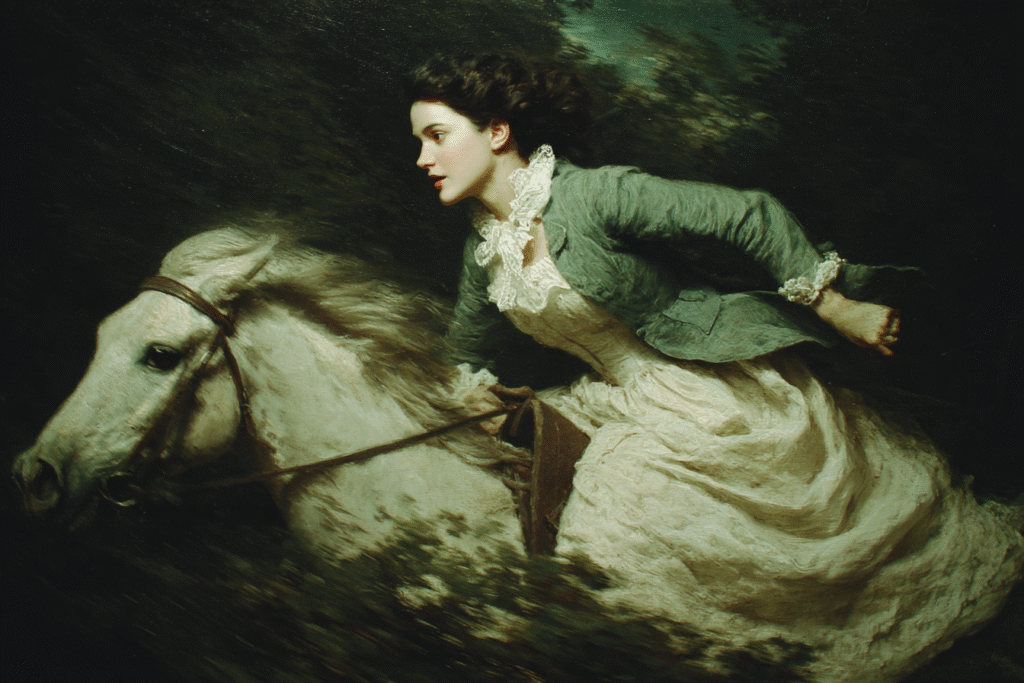
From SRP author Tracy Cooper-Posey:
You know how sometimes, you read about some long-lost woman from history and you find yourself thinking, “How in the name of history class did I never hear about her?” That was me when I first stumbled across Sybil Ludington—allegedly the teenage girl who rode further than Paul Revere to save a town from the British during the American Revolution.
I say “allegedly” because her story (like King Arthur’s) is one of those wonderfully murky ones that historians love to squabble over. Which, of course, only makes it more interesting.
So let’s go back to 1777. Sixteen-year-old Sybil—who, frankly, already had enough on her plate as the eldest of twelve kids—was the daughter of Colonel Henry Ludington, a militia commander in New York. One rainy April night, a messenger thundered up to their farm with news: British troops had attacked Danbury, Connecticut, burning supplies and generally doing their British thing. The local militia needed rallying, and fast.
Enter Sybil.
Or so the story goes.
Her father, tied up with his duties and possibly overwhelmed by the logistics of managing 400 scattered militiamen, is said to have turned to his teenage daughter and asked her to ride out and summon the troops. And she did—covering roughly 40 miles through dark, muddy countryside, knocking on doors, rousing farmers, and yelling warnings. One version even has her fending off a highwayman with a stick. In the pouring rain. At night. On horseback.
Which makes Paul Revere’s much-celebrated 12-mile jog look a bit… small, doesn’t it?
The trouble is, we don’t really know if it happened.
The first written account of her legendary ride didn’t show up until over a hundred years later—in a memoir published by her grandchildren, no less, who may have been just a smidge enthusiastic in polishing the family legend. The newspapers of the time? Silent. Military records? Nada. It wasn’t until the early 20th century that Sybil’s story started getting airtime, and it blossomed beautifully during the patriotic nostalgia fest that was the American Bicentennial.
But even if the finer details are fuzzy (or invented), there’s still something deliciously powerful about the image: a girl on a horse, alone in the dark, trying to rally an army. Whether the ride happened exactly as described—or was closer to a local dash between farms—doesn’t change the fact that Sybil was real, the war was real, and the need for women and girls to step up in times of crisis was very, very real.
And it makes you wonder how many other Sybils are tucked away in the footnotes of history. Girls and women who did what needed to be done—not for glory, but because it had to be done. And then they got up the next day and made breakfast for twelve siblings.
Sybil Ludington lived a full life after the war. She married, had a child, and quietly faded into the background—until the 1900s rolled around and her descendants reminded the world of the girl who may or may not have saved a town one rainy night.
Was she a patriot on horseback or a family legend that galloped into myth? Maybe a bit of both.
And honestly, I think she’d be fine with that.

Tracy Cooper-Posey
SRP Author



